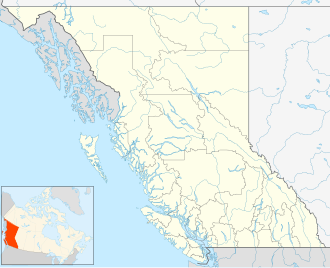| Muncho Lake Provincial Park | |
|---|---|
 | |
 Interactive map of Muncho Lake Provincial Park | |
| Location | Northern Rockies RM, British Columbia, Canada |
| Nearest city | Fort Nelson |
| Coordinates | 58°57′29″N125°44′37″W / 58.95806°N 125.74361°W |
| Area | 88,420 ha (341.4 sq mi) |
| Established | May 31, 1957 |
| Governing body | BC Parks |
| Website | bcparks |
Muncho Lake Provincial Park is a provincial park in British Columbia, Canada, located on the Alaska Highway as it transits the northernmost Canadian Rockies west of Fort Nelson. The park is part of the larger Muskwa-Kechika Management Area. [2] It is named after Muncho Lake, which is in the park and is both the name of the lake and of the community located there.
